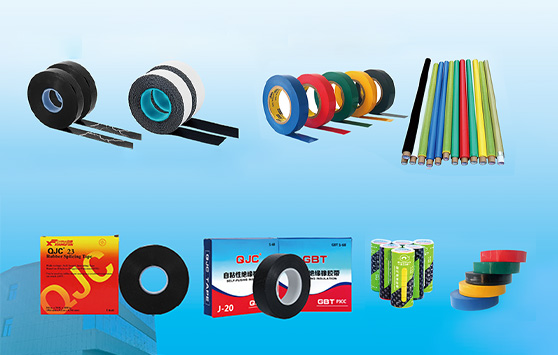Understanding Auto Wire Harness Tape A Key Component in Automotive Wiring
In the automotive industry, the efficiency and effectiveness of electrical systems are paramount, as they play critical roles in vehicle performance, safety, and comfort. One often overlooked yet essential component in the realm of automotive wiring is the auto wire harness tape. This specialized tape serves various important functions that enhance the longevity and reliability of wire harnesses, which are assemblies of wires or cables that transmit electrical power and signals throughout a vehicle.
What is Auto Wire Harness Tape?
Auto wire harness tape is a type of adhesive tape specifically designed for bundling and insulating wires within automotive wire harnesses. It is typically made from durable materials such as polyester, vinyl, or cloth, which can withstand the harsh conditions found in automotive environments. The tape is engineered to resist various factors including heat, moisture, chemicals, and abrasion, making it ideal for use under the hood or in other challenging locations in a vehicle.
Key Features and Benefits
1. Insulation and Protection One of the primary functions of auto wire harness tape is to provide electrical insulation. By wrapping the tape around the wire bundles, it prevents short circuits and electrical interference. This is crucial in vehicles where numerous electrical systems and components run in close proximity to one another.
2. Durability Automotive environments can be tough on materials, with exposure to high temperatures, vibrations, and moisture. Auto wire harness tape is designed to endure these conditions, ensuring that wire bundles remain intact and functional over time. This durability helps to reduce the risk of electrical failure, which can lead to costly repairs and potential safety hazards.
3. Ease of Installation The tape is user-friendly and can be applied quickly and efficiently. Its flexibility allows for smooth wrapping around irregularly shaped wires and connectors, ensuring a secure fit. Many types of auto wire harness tape come with an adhesive backing that sticks easily to the surfaces, simplifying the installation process.
auto wire harness tape

4. Organizational Benefits Auto wire harness tape aids in organizing wiring systems within a vehicle. By bundling wires together, it minimizes clutter and makes it easier to identify specific wires when maintenance or repairs are needed. This organization not only improves the aesthetic of the wiring system but also simplifies troubleshooting processes.
5. Noise Reduction In addition to its primary functions, wire harness tape can also help reduce noise and vibrations. By providing a cushioning effect, it can minimize the rattling of loose wires, contributing to a quieter cabin experience for passengers.
Applications in Automotive Wiring
Auto wire harness tape finds its applications in various automotive contexts. It is used in vehicle assembly plants during the manufacturing process to assemble wire harnesses systematically. Additionally, during repairs or modifications, technicians often utilize this tape to ensure that any new wiring is properly insulated and secured.
Moreover, it can be advantageous in custom automotive projects, where enthusiasts might rewire parts of their vehicles or install aftermarket components. Ensuring that these wiring systems are safe and well-organized is crucial for the overall functionality and safety of the vehicle.
Conclusion
In summary, auto wire harness tape is a small yet vital component of automotive electrical systems. Its ability to insulate, protect, and organize wiring makes it an essential tool in ensuring the reliability and longevity of vehicle wiring harnesses. As automotive technology continues to advance, the role of such specialized materials will only become more significant, underscoring the importance of investing in quality components for electrical systems in every vehicle. Whether in manufacturing or maintenance, understanding the value of auto wire harness tape is key for automotive professionals and enthusiasts alike.
-
XIANGFAN Rubber Tape-Ultimate Solutions for All Your Insulation NeedsNewsJun.24,2025
-
XIANGFAN Rubber Tape-Protection for Industrial and Residential ApplicationsNewsJun.24,2025
-
XIANGFAN Rubber Tape: Superior Safety and Sealing for Demanding EnvironmentsNewsJun.24,2025
-
XIANGFAN Rubber Tape: Reliable Solutions for Every Electrical ChallengeNewsJun.24,2025
-
XIANGFAN Electrical & Industrial Tape: Powering Reliability Across IndustriesNewsJun.24,2025
-
XIANGFAN Electrical & Industrial Tape: Excellence in Every ApplicationNewsJun.24,2025
